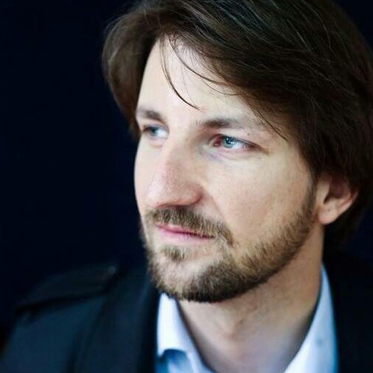Iraqi refugee displaced by ISIS started new life as portrait drawer in Erbil

ERBIL (Kurdistan 24) – Shukri Abd Attiye, 39, fled his former home in al-Qaim in Iraq's Anbar province from ISIS to the Kurdistan Region, where he lives in safety and works as a portrait drawer.
"I came to Erbil as an IDP (Internally Displaced Person) during the time of ISIS attacks in 2016," Attiye told Kurdistan 24.
"When I left Anbar in 2016, I stayed at an IDP camp near Bizebez Bridge, which separates Anbar from Baghdad. My family and I stayed there for a month, and later we left for the Kurdistan Region," he said.
Attiye is married and has four children.
He did not immediately start portrait drawing when he arrived in the Kurdistan Region's capital.
"In the beginning, I was not painting. I worked at restaurants and farms. I used to draw for a long time, but I did not know that this art would be popular here," he said.
He recalled when he first realized that his talent for drawing portraits could be a viable career for him in Erbil.
"I was visiting the Citadel and saw a Kurdish painter sitting here," he said. "He was drawing portraits and, for him, this was taking up to 10-15 days. I told myself, 'I can draw portraits in 1-2 hours!' So, I took a space in the corner of the walking side and started to draw portraits for people."
"I have been drawing since I was a kid; I never took a course. It is a talent that I have discovered," he said.
Attiye has drawn portraits of the Kurdistan Region Prime Minister Masrour Barzani.
"When I like a person, I also would like to draw a portrait for them," he said. "My area lost safety and security during the ISIS attacks, but here (in the Kurdistan Region), I have experienced security and stability."

"I take pride in drawing such portraits [of Kurdish officials]."
Attiye also learned Kurdish by working in the citadel's market.
"Speaking is essential to communicate with the local people, and I have been here for about six years," he said. My Kurdish, however, is mainly improved when the conversation relates to drawing, painting, and other basics. Otherwise, I still need improvement."
"In the beginning, I faced some difficulties communicating with the people," he recalled. "For instance, they would mention details on how they expected their portraits to be, and I could not fully understand them."
"This was affecting my work, so I told myself I need to learn the language," he added. "In the beginning, I asked others to translate what the Kurdish customer wanted in their portrait for me. Later on, I improved my Kurdish."
Attiye said that people in Erbil have always treated him with respect.

"The people here in Erbil are respectful. I have not felt like a stranger in Erbil," he said. "They like this artwork to the extent that, although having a stand on this sidewalk is not permitted, they would not ask me to leave – in fact, they are supportive of cultural work."
"My customers are mainly are Kurdish people during special occasions such as Eid (the religious holiday that marks the end of the month-long Ramadan fasting period) and Valentine's day," he explained. "I have also had tourists asking for portraits, people from China, Germany, France, and other countries. I draw in black and white, and also colorful portraits."
